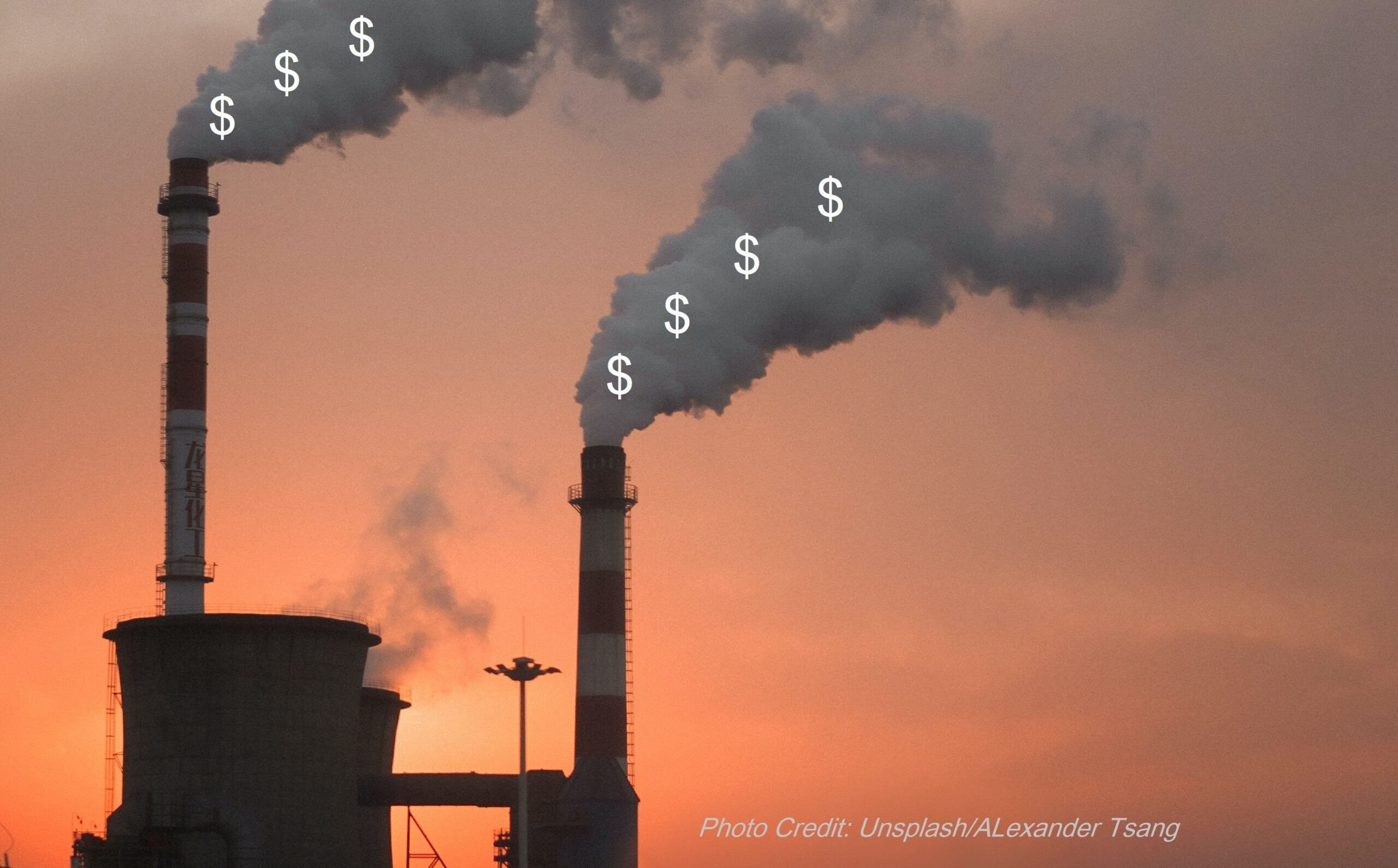In the fall of 2023, Georgia submitted a new off-cycle Integrated Resource Plan. They say this is because of unexpected increased demand which was not anticipated 2 years ago during the standard IRP.
Read below to see MOCA’s Dr. Anne Mellinger-Birdsong comments on the new proposed IRP. The short summary is that this new IRP request harms health, exacerbates climate change, and is not fiscally responsible. It puts undue burden on lower income residential customers, for the benefit of a few large commercial entities.
- GA Power has asked for and received rate increases twice in the last year and half. This new request increases monthly costs more. This increases the energy burden for lower income customers and is especially hard for families with children. Having a high energy burden is one of the social determinants of health, when lower income families spend a lot of their resources on electricity, they may not be able to buy enough healthy food for the children, they may not be able to afford medicine, they may be forced to turn the heat down and wear coats and gloves at home, or not use air conditioning in the summer and then get heat-related illnesses.
This new request is mainly because of commercial activities, yet the cost is being spread to every single customer, including low-income families who are already struggling because of a high energy burden. Residential customers will be paying the cost of increased electricity generation that only benefits commercial companies.
2. Methane or natural gas has numerous health costs. If the PSC approves more natural gas, they are approving more health harm to GA Power customers, to GA Power outdoor workers, and to people who live in other states near fracking wells.
a. Burning natural gas creates air pollution and greenhouse gases. The air pollution includes NO2 (nitrogen dioxide), ozone (formed from the NO2 and VOCs), SO2 (sulfur dioxide), PM2.5 (particle pollution), mercury, arsenic, and other heavy metals, and VOCs (volatile organic compounds, including benzene and formaldehyde, which are known carcinogens). (https://www.epa.gov/power-sector/power-plants-and-neighboring-communities)
b. The health harms from all these pollutants include: asthma attacks, emphysema attacks and progression of emphysema, heart disease, strokes, and dementia, preterm birth, low birthweight, cancer, mental health problems, and much more.
c. Children are more vulnerable to these pollutants than adults because they are still growing, and their organs are still developing, and because they breathe more air for their size than adults. 80% of our lungs grow AFTER birth, and all this lung growth happens during childhood, into the teenage years. When teens have a growth spurt, not only does their height shoot up, but their ribs and lungs also have a growth spurt. Breathing polluted air, especially PM2.5, PM10, and NO2, damages their lung growth so they end up with 10-12% smaller lungs at the end of their teen years. This sets them up for a lifetime of health problems when they are adults. NEJM, https://doi.org/10.1056/NEJMoa1414123
d. When coal plants in California closed, the rate of preterm births went down 25% for women living within a mile or two of the plants. American Journal of Epidemiology, Volume 187, Issue 8, August 2018, Pages 1586–1594, https://doi.org/10.1093/aje/kwy110
e. When coal plants in China closed, the rate of developmental delay in 2-year olds went down 67%, from 15% to 5%. Environ Health Perspect. 2008 Oct; 116(10): 1396–1400. doi: https://doi.org/10.1289/ehp.11480
f. Children who live near coal plants have higher rates of ADHD, anxiety, and social problems. J Expo Sci Environ Epidemiol. 2022; 32(1): 124–134. doi: https://doi.org/10.1038/s41370-021-00369-7
g. Methane gas is associated with harm to human health at all stages of production and use: from gas wells, to pipelines, compressor stations, and use in power plants. These health harms include exposure to carcinogenic compounds present in methane gas, fracking solutions, leaks from compressors stations and pipelines, and explosions and fires along pipelines. NEJM https://doi.org/10.1056/NEJMp1913663
There are numerous health problems in children living near fracking sites, including double the rate of leukemia in children who live near gas wells, and increased asthma and other lung conditions. (https://www.nejm.org/doi/full/10.1056/NEJMp1913663, https://e360.yale.edu/features/fracking-gas-chemicals-health-pennsylvania, https://ehp.niehs.nih.gov/doi/10.1289/EHP11092, https://www.nature.com/articles/s41560-021-00970-y)
h. Georgia Power has over 700 lineworkers. Outdoor workers are subject to health problems from outdoor air pollution, and air pollution reduces work productivity and increases work absences. Studies document that people exposed to air pollution, especially PM2.5, have slower cognitive processing and less productivity. They have more work absences, which increases GA Power’s costs. Thus, building new power sources that produce pollution increases Georgia Power’s labor costs. This productivity loss is not included in the LCOE, so it makes gas even more expensive for GA Power to use.
3. In addition to the direct health threats from methane gas, there is climate change. Climate change is the number one threat to health for children who are alive now. Numerous medical associations including the American Medical Association, the American Academy of Pediatrics, the American College of Physicians, and the American Academy of Family Practice have policy statements that climate change is a dire threat to human health. Natural gas power plants produce A LOT of carbon dioxide (CO2), the main greenhouse gas. They also leak unburned methane into the air from fracking wells, along pipelines, and at power plants. Though methane stays in the air a shorter time than CO2, while it is in the air it is a much more potent GHG than CO2. By proposing to use more methane gas and continue operating coal plants, GA Power is going against the medical advice of the American Medical Association, is directly harming the health of Georgia children and adults, increasing its own costs, and threatening its future.
4. In addition to the direct health harms and climate change, all of the air pollution and climate health problems are more concentrated in communities of color, because environmental racism means that we have located more gas wells, pipelines, and power plants in or near communities of color. These disproportionate exposures contribute to health disparities we see every day in our country and state. Due to historic and current exclusion from investment in infrastructure and other forms of structural racism, communities of color are more impacted by floods, hurricanes, extreme or elevated heat, and more.
5. Coal plants are not only detrimental to human health, but they also damage crop yields for farms within 100 miles of the coal plants. Shutting down coal plants in the U.S. between 2005-2016 resulted in an increase of 330 million bushels of corn. Extending the use of coal fired units will harm Georgia’s economy and put undue burden on farmers.
6. To summarize the health effects of burning methane and coal, these forms of fuel are not safe, and are contradictory to the PSC duty to make sure that utilities produce power that is safe.
7. Lazard’s Levelized Cost of Energy https://www.lazard.com/research-insights/2023-levelized-cost-of-energyplus/ shows that:
a. unsubsidized Utility Scale Solar + Storage is $46-$102.
b. unsubsidized Onshore Wind + Storages is $42-$114.
c. unsubsidized Offshore Wind: $72-$140.
d. unsubsidized Gas Combined Cycle is $39-$101.
Lazard LCOE Subsidized Costs:
a. Investment Tax Credit: Utility Scale Solar + Storage: $31-$88.
b. Production Tax Credit: Utility Scale Solar (no storage): $0-$77.
c. Onshore Wind + Storage (ITC/PTC): $12-$103.
d. Offshore Wind: $56-$114.
Unsubsidized Solar with Storage is in the same price range right as building new methane gas turbines now: $46-$102 compared to $39-$101. The lifetime costs of subsidized solar are currently less expensive than building new method turbines. However, Gas is subject to price fluctuations in future years, because the cost of natural gas changes frequently. Right now, natural gas prices are historically low, and as they change in the future it is highly likely that methane gas will get more expensive. In addition, there are subsidies right now that bring the cost of utility scale solar with storage down, so that it is less expensive than natural gas.
8. Gas Combined Cycle is very sensitive to fuel costs. Solar and Wind aren’t – once they’re built, there is no fuel cost. So, GA Power is gambling with ratepayers paying the cost: if gas goes down, its lifetime cost is cheaper, if gas goes up, solar and wind are cheaper.
9. There are new forms of battery storage coming online this year, which could cost 90% less than current battery storage. This will make solar and wind with storage even more economically favorable.
10. In addition, the EPA recently finalized a new PM2.5 rule, which will likely affect the new turbines at Plant Yates, requiring more pollution controls. EPA is about to finalize an update mercury and air toxics standard, which will also require more pollution controls. These new standards will also add to the marginal cost of continuing to operate coal units, which have also been proposed in this IRP.
11. This proposal includes buying electricity from Mississippi Power, which is very likely to be electricity produced by coal. Coal fired power plants cause preterm birth and damage children’s cognitive development and cause numerous respiratory and cardiovascular problems in all ages, when coal plants are closed there are fewer preterm births and toddlers IQs go up. Coal is the dirtiest fuel to use and causes climate change, contributing to poor health now and in the future. (https://doi.org/10.1093/aje/kwy110, https://journals.plos.org/plosone/article?id=10.1371/journal.pone.0091966)
12. In summary, this new proposal spread the costs from a few commercial customers onto all GA Power rate payers, it is likely to not be the best fiduciary plan for GA Power, its shareholders, and its ratepayers given that solar with storage is cost competitive with methane at a time when methane prices are low, it causes health problems in citizens of Georgia and in people who live in other states where methane is produced, it contributes to climate change which is already causing health problems and deaths in Georgia, and it contributes to health disparities and environmental injustice.
It makes no sense that Georgia Power is proposing a plan that is not fiscally responsible and will also hurt the health of Georgians. There is plenty of land around the coal units which could likely be converted to solar, which would improve the safety and well-being of surrounding residents. We recommend that the PSC require much more solar with storage, and severely limit new natural gas production.
3/28/2024 AKMB





